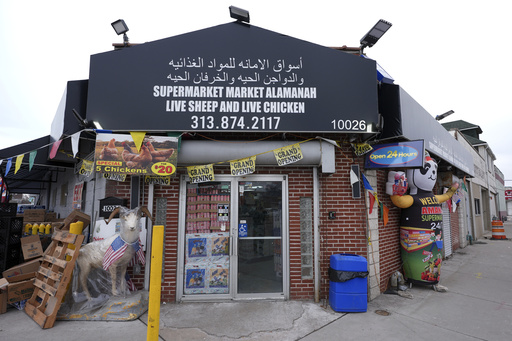HAMTRAMCK, Mich. — Leslie Knox grew up in the 1960s during a time when her community, located in the Detroit area, faced serious allegations of displacing neighborhoods to eliminate its Black residents. Now, years later, she has returned to Hamtramck, settling into a new two-story house on Gallagher Street, where she is taking her time figuring out how to furnish her space. With no mortgage to pay, her only financial commitments are property taxes and home insurance.
Knox is among the final beneficiaries of a landmark legal settlement that mandates the city construct 200 homes specifically for the victims of racial discrimination and their families. This case, originating from a lawsuit filed in 1968, stands as one of the longest civil rights litigations concerning housing in U.S. history. After decades of legal battles, the case is finally reaching its conclusion.
“I feel like I’ve been given this house by divine intervention because no man in their right mind would just hand the keys to houses,” Knox, now 70, expressed, placing two Black angel figurines on her kitchen window. “I believe God put me here.”
Amer Ghalib, the mayor of Hamtramck and a Yemeni immigrant, stated that a “dark chapter” has come to a close in the city’s story. “This is not going to happen again,” remarked Ghalib, who took office in 2021. “We are a very diverse community.”
Historically, Hamtramck’s economic growth attracted immigrants from Eastern Europe, predominantly Poles, in the early 1900s. The city is so intertwined with Polish heritage that Cardinal Karol Wojty?a even visited in 1969 before returning as Pope John Paul II in 1987, with a statue in his honor situated in a public plaza.
Despite this welcoming atmosphere for white residents, many Black citizens in Hamtramck reported violations of their civil rights. In 1971, after a legal trial, U.S. District Judge Damon Keith determined that the city had purposefully targeted some Black neighborhoods by demolishing low-income housing for the community’s benefit.
“It was an attempt to eliminate a Black population,” noted Michael Barnhart, an attorney representing the victims. “It wasn’t about needing the land for something else; it was about wanting them gone.”
After years of appeals from the city, it finally agreed in 1981 to a solution: building apartments for seniors and constructing 200 scattered housing units for families connected to the class-action lawsuit, with those meeting specific income criteria receiving priority.
However, the journey to fulfill this promise took more than four decades. “The city lacked the funds,” explained James Allen, a legal representative for Hamtramck in the latter stages of the case. Twice during city history, local government faced state oversight due to fiscal issues. Even after a festive ribbon-cutting ceremony in 2010 attended by a judge and Michigan’s governor, numerous homes remained unfinished.
“Most, if not all, construction funding comes from federal and state grants,” Allen elaborated, adding that without external financial support, the city could not meet its obligations. The final three homes cost around $1 million to construct, highlighting the struggle for financial resources within the city.
Hamtramck’s history has continually intertwined with the automobile industry. In the 1950s, over 30,000 people were employed at the Chrysler factory known as Dodge Main. However, by 1980, the factory’s closure marked a significant decline in both the labor force and population. Polish Americans began moving away, paving the way for new immigrant populations from Yemen, Bangladesh, Bosnia, and beyond.
Today, despite its small size of just 2 square miles, Hamtramck is marked by two-story flats, tight yards, and narrow pathways. General Motors now manufactures electric vehicles in a plant straddling the line between Hamtramck and Detroit, and the city’s population has seen a resurgence, reaching 27,000—20% more than it was in 2010, though still not close to its early 20th-century highs.
The town’s demographic transformation reflects striking cultural shifts; the mayor and all council members are Muslim, and a stretch of Holbrook Street was renamed Palestine Avenue amid ongoing geopolitical tensions. A local Bangladeshi-influenced pizzeria, Amar Pizza, earned recognition as one of America’s best last year. Meanwhile, the historic St. Ladislaus Catholic Church, which hosted a future pope, is now closed and up for sale, while calls to Muslim prayers are broadcasted via loudspeakers.
“I can hear it sometimes at 6 a.m., as it’s quite loud,” Knox mentioned. “Being Christian, when they pray in Yemeni, I pray in my spiritual language.”
Reflecting on her past, Knox admitted she cannot quite recall the circumstances that led to her family leaving Hamtramck years ago. After applying for the lawsuit’s settlement, she was granted one of the final houses and relocated from the nearby city of Detroit in November.
“I do reflect about history,” Knox stated. “I believe I was put here for a reason. I can’t explain it. … I’m already 70 and just starting all over again.”
Hamtramck is not shying away from its history; a park commemorates Sarah Sims Garrett, the lead plaintiff in the lawsuit, and a nearby monument chronicles the long fight against discrimination.
Dwydell Garrett, her son, who is 59, also occupies a house awarded to him through the settlement. Memories of his mother have deeply influenced his choice to return. “It’s a very special honor to have someone raise me without bitterness for past injustices,” Garrett reflected. “I can’t hold a grudge.”



